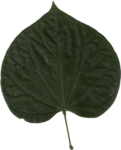Fall 2019 Redbud conference
Oklahoma State University, November 23, 2019

Speakers
- Mehmet Aktas, Univeristy of Central Oklahoma
Title: Network Classification using Topology
Abstract: Information networks are becoming increasingly popular to capture complex relationships across various disciplines, such as social networks, citation networks, and biological networks. The primary challenge in this domain is measuring similarity or distance between networks. In this talk, I will introduce a topological method for the network classification problem. Inspiring from heat diffusion, I will first define the diffusion Frechet function on Euclidean space and networks. Then, I will employ this function to encode the topological features of networks and use these features for classification. I will share experimental results on music and text networks.
- Robert Haraway III, Oklahoma State University
Title: Cellulating higher Teichmüller space
Abstract:
We will define a higher Teichmüller space due to Fock and Goncharov and
introduce Cooper and Long's mapping-class-group-invariant decomposition of this
space. Joint work of the speaker, Robert Löwe, Dominic Tate, and Stephan
Tillmann has shown that this decomposition is a cell-decomposition.
- Rachel Lehman, University of Arkansas
Title: Obtaining a good 3-orbifold from a bad 3-orbifold
Abstract: The Orbifold Theorem tells us everything we want to know about good 3–orbifolds, but nothing about the 3–orbifolds that contain a bad 2–suborbifold. My goal is to understand these 3–orbifolds that contain bad 2–suborbifolds. Even though they are not geometric, there is still a lot to be said about these spaces. Furthermore, if we have a bad 3–orbifold can we perform a new type of surgery on this orbifold in order to be left with a good 3–orbifold.
- Jean-Pierre Mutanguha, University of Arkansas
Title: The irreducibility of monodromy is a mapping torus invariant
Abstract: An immediate corollary of Nielsen-Thurston classification of surface homeomorphisms is that if two surface homeomorphisms f and g have homeomorphic mapping tori, then f is pseudo-Anosov if and only if g is pseudo-Anosov. Using hyperbolization theorem and rigidity results, the hypothesis can be weakened to quasi-isometric mapping tori. We show an analogous result for free group automorphisms: if two free group automorphisms have isomorphic mapping tori, then the first automorphism is fully irreducible and atoroidal if and only if the other is fully irreducible and atoroidal. This answers a question posed by Dowdall-Kapovich-Leininger.
- Hung Tran, University of Oklahoma
Title: TBA
Abstract: TBA
